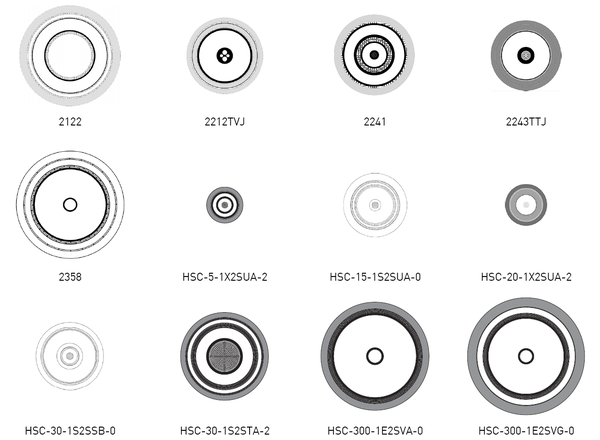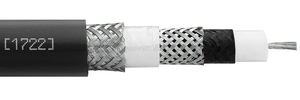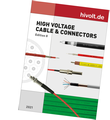Triaxial High Voltage Cable
Various triaxial cable types for voltages up to 300kVDC. Many cable types are furnished with semiconductive layers. These cables feature low partial discharge levels making them an excellent choice for sensitive measurement applications or specific AC or pulsed operation.
Silicone, PE-X and EPR dielectrics are standard - miscellaneous dielectrics on request.
hivolt.de is able to provide modified standard types or full custom designed cable for applications where special cable types are required.
Type Overview
| RATED VOLTAGE |
TYPE |
DESCRIPTION |
CONDUCTORS | DIELECTRIC MATERIAL |
JACKET MATERIAL |
OUTER DIA |
STA- TUS |
[kVDC] | [kVAC] | # | [AWG] | [mm] | *1 |
|---|---|---|---|---|---|---|---|---|---|
| 5 | HSC‑5‑1X2SUA‑2 | 5kV between shields | 1 | 21 | PE-X | TPE-U | 5.0 | P | |
| 20 | HSC‑20‑1X2SUA‑2 | low noise | 1 | 20 | PE-X | TPE-U | 6.1 | P | |
| 22.5 | 2122 | pulse cable, 5kV between shields |
1 | 4 | EPR | PVC | 41.9 | E | |
| 30 | HSC‑30‑1S2SSB‑0 | shielded core | 1 | 18 | SILICONE | SILICONE | 11.0 | E | |
| 30 | HSC‑30‑1S2STA‑2 | two shields: 35mm², 11mm² |
1 | SILICONE | TPE-O | 25.0 | E | ||
| (50) | 15 | HSC‑15‑1S2SUA‑0 | low PD, very robust | 1 | 16 | SILICONE | TPE-U | 14.3 | P |
| 60 | HXC‑60‑3S1SUA‑0 | e-beam | 3 | SILICONE | TPE-U | 25.4 | Y | ||
| 75 | 25 | 2241 | quadraxial | 1 | 14 | EPR | PU | 25.4 | S |
| 100 | 30 | 2212TVJ | double shielded X‑Ray | 3 | 10 | EPR | PVC | 24.1 | S |
| 125 | 40 | 2243TTJ | triax 2243 | 1 | 8 | EPR | TPR | 23.0 | S |
| 300 | 2358 | 25kV between shields | 1 | 4 | EPR | PVC | 46.7 | S | |
| 300 | HSC‑300‑1E2SVA‑0 | double shield | 1 | 4 | EPR | PVC | 41.7 | S | |
| 300 | HSC‑300‑1E2SVG‑0 | 50kV between shields | 1 | 4 | EPR | PVC | 49.3 | S | |
| 320 | HXC‑320‑3EUB‑0 | e-beam | 3 | EPR | PUR | 38.2 | E | ||
| *1 - | The preferred cable types have status P. Please refer to the Cable Terminology page for complete list of status designators. |
Sample Cross Section Views

Disclaimer
The information given here is technical data, not assured product characteristics. It has been carefully checked and is believed to be accurate; however, no responsibility is assumed for inaccuracies. The user has to ensure by adequate tests that the product is suitable for his application regarding safety and technical aspects.
hivolt.de GmbH & Co. KG does not assume any liability arising out of the application or use of any product described.
Safety Advice
Design, installation and inspection of machinery and devices carrying high voltage require accordingly trained and qualified personnel. Appropriate safety rules and directives must be complied with.
Improper handling of high voltage can mean severe injuries or death and may cause serious collateral damage!


